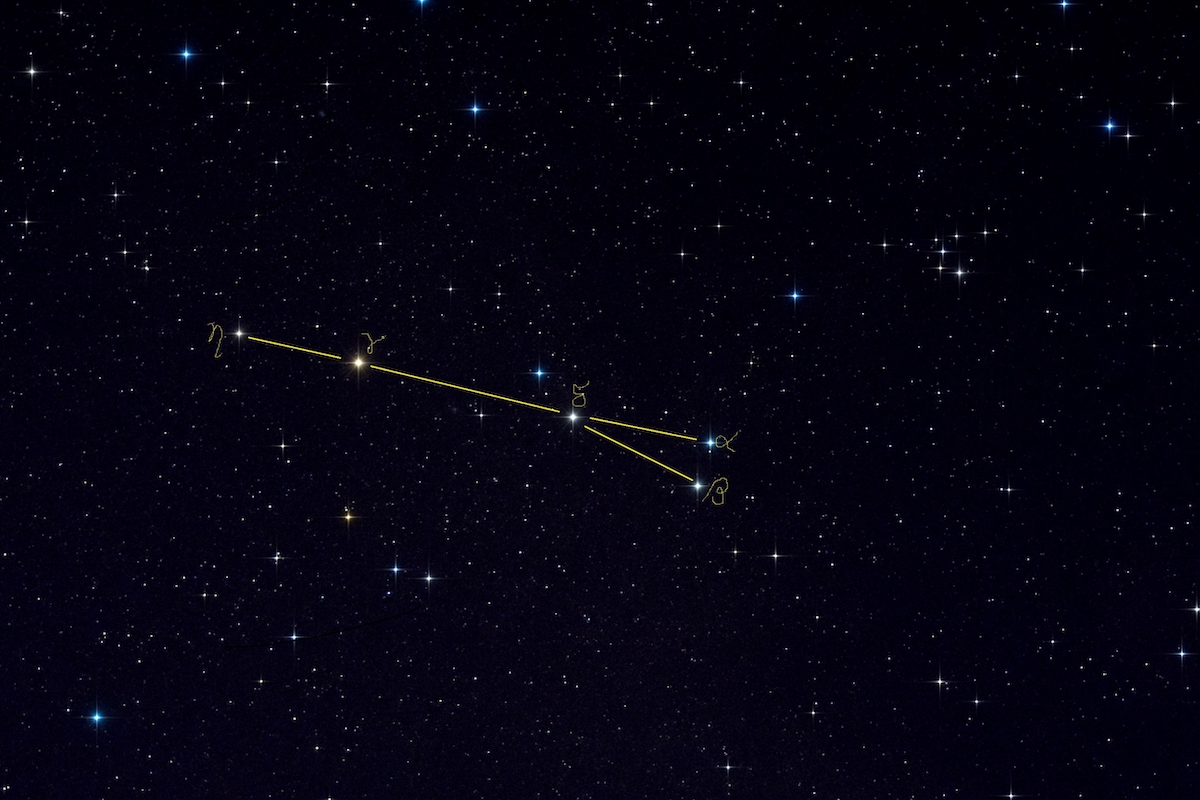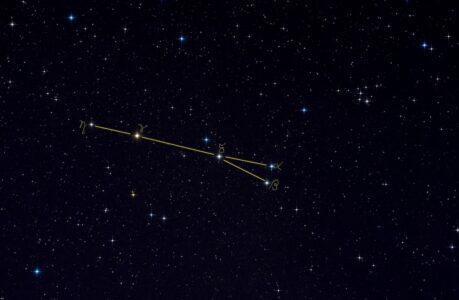Stargazing has always been an intriguing pastime for many people. The night sky is a vast expanse of glittering stars, constellations, and galaxies that fascinate and awe us. Among the various constellations visible from the northern hemisphere, Sagitta, also known as the Arrow, is one of the smaller and lesser-known ones. However, it has a unique history and significance that make it worth exploring.
In this article, we’ll delve into the Sagitta constellation, its mythology and history, and how to spot it in the night sky from Ireland. We’ll also discuss the best time of year to view it and the equipment you need to observe it in detail.
The Mythology and History of Sagitta:
The Sagitta constellation is one of the 48 constellations first catalogued by the ancient astronomer Ptolemy in the 2nd century. The name Sagitta comes from the Latin word for “arrow,” and it is sometimes called “The Arrow” or “The Arrowhead.” In Greek mythology, the constellation represents the arrow used by the god Apollo to slay the great serpent Python. According to legend, after killing the serpent, Apollo flung his bow and arrow into the sky, creating the Sagitta constellation.
Locating Sagitta in the Night Sky:
Sagitta is a small constellation located between the constellations of Aquila and Vulpecula. It is best seen in the northern hemisphere during the summer months when it is highest in the sky. To find Sagitta, you’ll need to look for it in the vicinity of the bright star Altair, which is part of the Aquila constellation.
The easiest way to locate Sagitta is to first find Altair, which is the 12th brightest star in the night sky. Once you have found Altair, look to its right, and you’ll see three stars that form a small triangle. These three stars are the main stars in Sagitta. The constellation is small and compact, and it is unlikely to be mistaken for any other constellation.
Best Time to View Sagitta from Ireland:
The best time to view the Sagitta constellation from Ireland is during the summer months, from late June to early September. During this time, Sagitta is high in the sky, making it easier to spot. The ideal time to view Sagitta is around midnight when it is at its highest point in the sky. You’ll need a clear sky away from any light pollution to see it clearly.
Equipment Needed to Observe Sagitta:
Sagitta is a small constellation, so you’ll need a telescope or binoculars to observe it in detail. A telescope with a magnification of 50x to 100x is ideal for viewing the constellation. You’ll also need a star chart or an app to help you locate the constellation accurately.
The Sagitta constellation may be small and lesser-known, but its unique mythology and history make it worth exploring. It is relatively easy to locate, especially if you use the nearby Altair star as a guide. The best time to view Sagitta from Ireland is during the summer months when it is highest in the sky. With the right equipment and a clear night sky, you can observe this fascinating constellation and appreciate its beauty and significance.
How can I see the constellation of Sagitta from Ireland?
To see the constellation of Sagitta from Ireland, you’ll need to wait until it is dark and there is no light pollution. The best time of year to view Sagitta from Ireland is during the summer months, from late June to early September. During this time, Sagitta will be high in the sky and easier to spot.
To locate Sagitta, first, find the bright star Altair, which is part of the Aquila constellation. Altair is the 12th brightest star in the night sky and can be seen from Ireland. Once you have located Altair, look to its right, and you’ll see three stars that form a small triangle. These three stars are the main stars in Sagitta.
If you have trouble spotting Sagitta, you can use a star chart or an astronomy app to help you find it. With a clear night sky and the right equipment, you can observe Sagitta and appreciate its unique mythology and history. A telescope or binoculars will help you see Sagitta in more detail. A telescope with a magnification of 50x to 100x is ideal for viewing the constellation.
Remember to choose a dark location away from city lights for the best view of Sagitta. And don’t forget to dress warmly, bring a chair or blanket to sit on, and allow your eyes to adjust to the darkness for at least 20 minutes before viewing.
The mythology of the constellation of Sagitta
The constellation of Sagitta, also known as “The Arrow” or “The Arrowhead,” has a rich mythology dating back to ancient Greek mythology. According to legend, the constellation represents the arrow used by the god Apollo to slay the great serpent Python.
In Greek mythology, Apollo was the god of music, poetry, prophecy, and the sun. He was also known as a skilled archer and often depicted with a bow and arrow. The story goes that Python, a giant serpent, was causing chaos and destruction in the land of Delphi. Apollo, with his trusty bow and arrow, went to slay the serpent and put an end to its destruction.
Apollo’s arrow, which he used to slay the serpent, is said to have been flung into the sky, creating the constellation of Sagitta. Some versions of the myth suggest that Apollo created the constellation as a reminder of his victory over Python, while others suggest that he created it to honour his sister Artemis, the goddess of the hunt, who was also skilled with a bow and arrow.
Sagitta is a small and relatively insignificant constellation in the night sky, but it’s mythology connects it to the powerful figure of Apollo, who was highly revered in ancient Greek culture. The constellation’s association with Apollo and his triumph over evil reinforces its symbolism as a symbol of victory and courage.
Today, Sagitta’s mythology continues to inspire stargazers and astronomy enthusiasts, who can look up at the constellation and appreciate its rich history and significance.
The Stars in the constellation of Sagitta
The constellation of Sagitta, also known as “The Arrow,” is a small constellation located in the northern hemisphere. It is one of the 48 constellations catalogued by the ancient astronomer Ptolemy in the 2nd century.
Sagitta is a compact and distinctive constellation that is easy to recognize in the night sky. It is composed of only a few stars, the brightest of which are Alpha, Beta, and Gamma Sagittae.
Alpha Sagittae, also known as Sham, is the brightest star in the constellation with a magnitude of 4.37. It is a yellow-white subgiant star that is 520 light-years away from Earth.
Beta Sagittae, also known as Alfirk, is a blue-white star that is 378 light-years away from Earth. It has a magnitude of 4.37, making it the same brightness as Alpha Sagittae.
Gamma Sagittae, also known as Alnasl, is a binary star system located 96 light-years away from Earth. It consists of two stars orbiting around each other, and their combined brightness gives Gamma Sagittae a magnitude of 3.48, making it the third brightest star in the constellation.
Aside from these three main stars, there are several other fainter stars in Sagitta, including Delta, Epsilon, Zeta, and Theta Sagittae. These stars are much dimmer than the three main stars and can only be seen with a telescope or binoculars.
While the stars in Sagitta may not be as bright or numerous as those in other constellations, they are still an important part of the night sky. Their unique configuration and association with the mythology of Apollo and his arrow make Sagitta a fascinating and meaningful constellation to observe and study.
Deep sky objects visible in the Constellation of Sagitta
The constellation of Sagitta, also known as “The Arrow,” is a small and relatively faint constellation that does not contain many deep sky objects that are visible to the naked eye. However, with the aid of a telescope or binoculars, it is possible to observe several interesting deep sky objects within Sagitta.
Here are some of the deep sky objects that can be seen in Sagitta:
- Messier 71 (M71): This globular cluster is located approximately 13,000 light-years away from Earth and contains tens of thousands of stars. It has a magnitude of 8.2, making it visible with a small telescope or binoculars.
- NGC 6822 (Barnard’s Galaxy): This dwarf irregular galaxy is located approximately 1.6 million light-years away from Earth and has a magnitude of 9.3. It is best observed with a telescope and is a popular target for astrophotography.
- IC 4699: This open cluster is located approximately 4,000 light-years away from Earth and contains around 30 stars. It has a magnitude of 7.5 and can be seen with a small telescope or binoculars.
- NGC 6888 (Crescent Nebula): This emission nebula is located approximately 5,000 light-years away from Earth and has a magnitude of 7.4. It is shaped like a crescent moon and is best observed with a telescope and narrowband filters.
- Sharpless 2-54 (Simeis 147): This supernova remnant is located approximately 3,000 light-years away from Earth and has a magnitude of 8.0. It is a large and complex object that is best observed with a telescope and narrowband filters.
While Sagitta may not be known for its abundance of deep sky objects, these objects offer an interesting and varied selection for stargazers and astrophotographers. With the right equipment and clear viewing conditions, these objects can provide a rewarding viewing experience and a deeper appreciation for the beauty and complexity of the universe.

